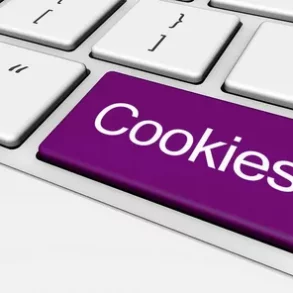Introduction
The Coronavirus Job Retention Scheme (CJRS) and Furlough Leave were introduced by the UK government to support employers during the COVID-19 pandemic. This guidance outlines key information for employers navigating these schemes in accordance with the laws of England and Wales.
Coronavirus Job Retention Scheme (CJRS):
Eligibility Criteria
Employers can claim for employees who were on their PAYE payroll on or before 30 October 2020. – Employees must be furloughed for a minimum period of seven consecutive calendar days.
Furloughed Employees
Furloughed employees should not undertake any work for their employer during the furlough period. – Employers can claim up to 80% of employees’ usual wages, capped at £2,500 per month.
Claiming Process
Claims can be made online through the HMRC portal. – Employers should keep records of furlough agreements and relevant payroll information.
Furlough Leave
Initiating Furlough Leave
Employers must consult with employees and obtain their agreement to be placed on furlough leave. – Agreements should be in writing and retained for a minimum of five years.
Rights during Furlough Leave
Employees on furlough leave retain their employment rights, including statutory sick pay and annual leave accrual. – Employers must continue to provide pension contributions and other contractual benefits.
Flexible Furlough
Since July 1, 2020, employers can adopt flexible furlough, allowing employees to work part-time while still being eligible for CJRS support for non-working hours.
Legal Compliance
Documentation
Maintain clear documentation of furlough agreements, communication with employees, and payroll records. – Ensure compliance with employment laws, including equal treatment and anti-discrimination regulations.
Regular Updates
Stay informed about updates to the CJRS and furlough leave guidelines issued by the government and HMRC. – Regularly communicate with employees about any changes or updates affecting their employment status.
Ending Furlough Leave
Consultation
Consult with employees before ending furlough leave or making any significant changes to their terms of employment. – Provide clear notice and reasoning for ending furlough leave.
Returning to Work
Consider health and safety measures when employees return to work, ensuring compliance with COVID-19 guidelines.
Conclusion
These guidance notes offer a comprehensive overview of the Coronavirus Job Retention Scheme and Furlough Leave, emphasizing legal compliance and best practices for employers in England and Wales. Employers are encouraged to seek professional advice to ensure accurate implementation and adherence to evolving regulations.
What is the Coronavirus Job Retention Scheme (CJRS) and how does it benefit employers and employees?
The CJRS is a government initiative supporting employers during the COVID-19 pandemic. It allows employers to furlough employees, with the government contributing towards their wages. This helps businesses retain staff during economic challenges.
Who is eligible for the Coronavirus Job Retention Scheme (CJRS)?
Employers can claim for employees who were on their PAYE payroll on or before October 30, 2020. Furloughed employees must not undertake any work for their employer during the furlough period.
How do employers initiate Furlough Leave, and what are the key considerations during this process?
Employers must consult with employees, obtain their agreement in writing, and keep records of furlough agreements. The guidance emphasizes compliance with employment laws and the need for clear documentation.
Can employees work while on Furlough Leave, and what is the concept of Flexible Furlough?
Initially, employees on furlough leave were not allowed to work. However, since July 1, 2020, flexible furlough allows employees to work part-time while still being eligible for CJRS support for non-working hours.
How much can employers claim under the Coronavirus Job Retention Scheme, and what are the payment caps?
Employers can claim up to 80% of employees’ usual wages, capped at £2,500 per month. The guidance explains the calculation process and payment limits.
What are the rights of employees on Furlough Leave, and how do these rights align with employment laws?
Employees on furlough leave retain their employment rights, including statutory sick pay and annual leave accrual. The guidance emphasizes compliance with equal treatment and anti-discrimination regulations.
What documentation is required for the Coronavirus Job Retention Scheme, and how long should employers retain records?
Employers should keep clear documentation of furlough agreements, communication with employees, and payroll records. These documents must be retained for a minimum of five years.
Can employers consult with employees before ending Furlough Leave, and what considerations are important in the return-to-work process?
Employers are encouraged to consult with employees before ending furlough leave or making significant changes to their terms of employment. The guidance also highlights health and safety considerations when employees return to work.
What are the key compliance requirements for employers participating in the Coronavirus Job Retention Scheme and implementing Furlough Leave?
Employers should maintain compliance with employment laws, ensure regular updates on government guidelines, and communicate changes to employees. The guidance stresses the importance of legal adherence and communication.
How often are the guidelines for the Coronavirus Job Retention Scheme and Furlough Leave updated, and where can employers find the latest information?
Employers should stay informed about updates to the CJRS and furlough leave guidelines issued by the government and HMRC. The guidance emphasizes regular communication with employees regarding any changes or updates affecting their employment status.
- Website Privacy Policy – First & Third-Party Cookies + Analytics - August 10, 2024
- Plant Maintenance Agreement - August 7, 2024
- Hire Of Room, Hall Or Other Premises - August 4, 2024









